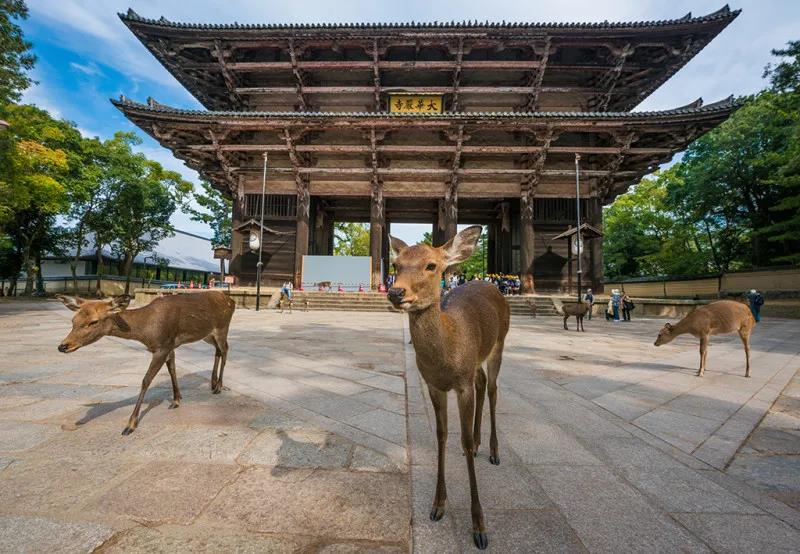
澳大利亚的袋鼠问题 | 外刊精读
本期精读的文章来自The Economist对于澳大利亚袋鼠问题的报道An Australian drought is killing millions of kangaroos
袋鼠是澳大利亚的国家象征之一,但它们正因为旱灾而大批量死亡,这也让更多的人呼吁政府改变管理袋鼠数量的方式。一些人认为如果将袋鼠作为家禽处理将更有利于袋鼠产业的发展,同时更能保障袋鼠的福利。但联邦和各州政府对此并不上心,很多人也表达了对政府推卸责任的批评。
下面是文章的详细分析:
首段介绍了文章背景:澳大利亚的袋鼠因为旱灾正在大量死亡。
Well before the current spate of bushfires started ravaging eastern Australia, they were already dying in droves.
早在当前丛林大火肆虐澳大利亚东部之前,袋鼠们已经在大量死亡。
well在这里是副词,它与介词短语搭配用于强调,意思是“大大的,远远的”,比如:Franklin did not turn up until well after midnight. 富兰克林直到午夜过后很久才出现。
do something in droves是一个固定搭配,意思是“有大量的……在做某事”,比如:People were leaving the countryside in droves to look for work in the cities. 成群结队的人离开农村到城里找工作。
Lachlan Gall has seen “several thousand” kangaroo corpses splayed under trees or bogged in the mud of dried-out reservoirs on his 54,000 hectares (134,000 acres) in outback New South Wales. “It’s distressing for the animals,” he says. “And it’s distressing for us to see.”
拉克兰·盖尔在新南威尔士州内陆有54000公顷(134000英亩)土地,他在上面曾目睹数千只袋鼠尸体散落在树底下或陷入干涸水库的泥土中。他说:“这对那些动物来说是很痛苦的”,“看到这些动物死亡,我们也感到痛苦”。
Across Australia’s most populous state, at least 5m kangaroos are thought to have died gruesome deaths since one of the country’s worst droughts began nearly four years ago.
澳大利亚在近四年前遭遇了历史上最严重的旱灾之一,从那时开始,该国这一人口最多的州里面预计至少有500万袋鼠惨死。
要形容人口稠密可以用populous,比如要表达“上海是全球人口最稠密的城市之一”,可以说:Shanghai is one of the most populous cities in the world.
die a XX death也是一个固定表达,意思是“以……的方式死亡”,比如要表达“某人寿终正寝”,可以说 somebody died a natural death
The crisis has prompted calls for changes to how Australia manages a national emblem.
这场危机促使人们呼吁澳大利亚改变其管理袋鼠这一国家象征的方式。
这里可以学习一个句式:XX has prompted calls for… (XX促使人们呼吁……),比如我们可以说:
The worsening air quality in this country has promoted calls for stricter environmental regulations.
第二段介绍了澳大利亚袋鼠的基本情况。
“Roos” once shared the landscape only with Aboriginals, who hunted them for food and revered them in rock art. The arrival of white settlers, and their sheep and cattle, sparked a competition for space and resources that remains unresolved.
袋鼠们曾经只与澳洲原住民共享风景,原住民狩猎它们以获取食物,同时他们还在岩石艺术中表达了对袋鼠的尊敬。白人定居者以及他们带来的牛羊引发了对空间和资源的争夺,这一问题至今仍未解决。
On a recent drive Geoff Wise, a veterinarian from Dubbo, says he spotted a kangaroo dead of hunger or thirst or killed by a passing vehicle roughly every 200 metres.
一名来自达博(澳大利亚一个城市名)的兽医杰夫·怀斯说,他在最近一次开车途中发现大约每隔200米就有一只袋鼠死于饥饿,口渴或被过往车辆撞死。
第三段介绍了袋鼠的经济以及环境价值。
Mr Wise chairs a body that recently convened a symposium about managing the kangaroo population better. State governments allow “commercial harvesting” of four kangaroo species for meat and hides.
怀斯先生是一家机构的主席,该机构最近召开了一次关于更好管理袋鼠种群的研讨会。州政府允许对四种袋鼠进行“商业捕猎”以获取肉和兽皮。
这一句中出现了不少熟词生义的用法。第一句中chair意思是“主持(会议);担任(委员会的)主席”,比如:The declaration was drafted by a committee chaired by Dr Robert Song. 宣言由罗伯特·桑博士领导的委员会起草。body意思是“机构,团体”,比如an advisory body 顾问团。
harvest不是指“收割庄稼”,而是指“捕猎”(to catch a number of animals or fish to eat),hide指的是“(用于制作皮革的)兽皮”(the strong thick skin of an animal which is used for making leather)
The kangaroo industry contributes about A$250m ($170m) a year to Australia’s economy. George Wilson of the Australian National University reckons it could be more if farmers could see kangaroos as livestock, not as competitors for the grass and water consumed by cattle and sheep.
袋鼠产业每年为澳大利亚经济贡献约2.5亿澳元(1.7亿美元)。澳大利亚国立大学的乔治·威尔逊认为,如果农民能够将袋鼠视为家畜,而不是与牛羊争夺草和水的竞争者,那么袋鼠产业的贡献可能会更多。
Kangaroos can survive on about 1.5 litres of water a day, a fraction of what cattle and sheep consume. They emit far less methane, a greenhouse gas, than cattle and sheep do.
袋鼠每天依靠1.5升水就可以生存,这相当于牛和羊每天耗水量的一小部分。它们排放的甲烷(一种温室气体)比牛和羊少得多。
survive on something意思是“依靠某事物维持生存”,比如要表达“这家人每月依靠3000元维持生计”,可以说:The family survives on 3,000 yuan a month.
又比如要表达“在大城市依靠我自己的工资维持生存很困难”,可以说:It is difficult to survive on my salary in big cities.
第四段介绍了澳大利亚捕猎袋鼠的政策以及现状。
The states typically permit licensed professionals to kill up to 15% of the total kangaroo population. Last year, for instance, the limit across the four states with the biggest number of roos was set at 7m.
澳大利亚各州通常允许有执照的专业人士捕杀不超过总数15%的袋鼠。比如对于四个袋鼠数量最多的州,去年的捕杀数量限制是700万。
typically意思相当于usually/normal,意思是“通常”。
But for some time, the kangaroo cullers have used only a fraction of their quotas, sometimes killing just 3.5% of the population. That is because demand for kangaroo meat and hides has been falling.
但很长一段时间以来,袋鼠猎杀者们只使用了他们配额中的一小部分,有时只杀死了袋鼠总数的3.5%,这是因为对袋鼠肉和袋鼠皮的需求一直在下降。
for some time是一个固定搭配,相当于for a fairly long period of time,即“很长一段时间以来”。
cull作为动词时是指“(为减少或限制数量而对动物)选择性宰杀”,比如:The plan to cull large numbers of baby seals has angered environmental groups. 选择性捕杀大量小海豹的计划引起了环保组织的强烈愤慨。
结尾段表达了人们对政府坐视袋鼠问题不管的不满。
Sussan Ley, the federal environment minister, attended Mr Wise’s symposium and tut-tutted about the problem. Farmers complain that the federal government and the states are shirking responsibility for animal welfare.
联邦环境部长苏珊·莱伊出席了怀斯先生的专题讨论会,并对袋鼠管理问题表达了反对。农民抱怨联邦政府和各州都在逃避保障动物福利的责任。
tut-tut这个词用得很生动,tut是指人们表达反对或不满时发出的啧啧声,somebody tut-tuts about something可以用来表示“某人反对某事物”。
As Mr Gall notes, there is “inherent animal cruelty in allowing drought to be the main population management tool for kangaroos”.
正如加尔先生所指出的,让旱灾成为管理袋鼠总数的主要工具本身就属于虐待动物。
最后一句写得很精彩,联邦政府和各州不愿意解决袋鼠问题,只能被动让旱灾充当减少袋鼠数量的角色。从这一句可以看出作者对政府推卸责任的批评。
今天我们学习了以下几个重点句型和表达:
(1) do something in droves
(2) populous
(3) XX has prompted calls for…
(4) survive on something
感兴趣的同学可以使用这些句型造句以加深印象。





